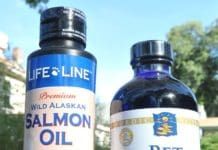Home Search
allergies - search results
If you're not happy with the results, please do another search
Whole Foods in Vet-Prescribed Dog Food
Three months ago, I asked, Why can't veterinary nutritionists design recipes that meet most nutritional needs through the use of whole foods
Using Veterinary Acupuncture as a Complementary Healing Method
Cornelia Guest has always had a passion for both animals and natural healthcare. She chooses natural healing modalities over Western pharmaceutical intervention whenever possible – for herself and her dogs.
Peacekeeping Among Cats and Dogs
It's fairly common for dogs to be placed for adoption with a caveat that there should be no cats
Vaccine Titer Tests: What They Can and Can’t Do
Titer test cost is the primary argument against getting titer testing for dogs, but on the other hand titer tests can save you lots of money in vaccination fees and vet bills. One of the tests I asked for at Otto's annual wellness exam last week was a vaccine titer test. These blood tests are able to detect antibodies that the dog has produced in response to a vaccination. Such positive results can confirm that the dog responded in the desired manner to the vaccination and is now protected against the diseases he was vaccinated for.
Wolves, Dogs, Differ in Ability to Digest Starches
Study finds genetic differences between dogs and wolves, with dietary implications. Domestication appears to have led to genetic changes in dogs that make them able to digest starches better than wolves can, according to a paper published in Nature in January.
Your Guide to Dog Facial Expressions
There is great value in having a solid understanding of canine facial expressions and their accompanying body language and behavior. The following are some of the more common canine communications offered by those very expressive furry faces. Keep in mind, though, that when drawing conclusions about a dog's facial expressions, it's important to factor in the rest of the body language in order to get the whole message.
Whole Dog Journal’s 2013 Dry Dog Food Review
Identifying a top quality dog food is not that difficult; I’m going to tell you how to do it in just a minute. But it may be difficult to find dog foods of this quality if you live far from an urban center or an independent pet supply store run by someone with more than a passing interest in canine nutrition. It may be even more difficult to afford some of the dog food brands listed; quality pet food ingredients cost more. But it shouldn’t be at all hard to see the improvements in your dog’s health if you’ve been feeding a low-quality food and make the switch to products of this quality.
Choosing the Right Top-Quality Dog Food
premium / natural / holistic pet food makers.üToo many choices? Never! It's good to have options
Whole Dog Journal’s 2012 Canned Dog Food Review
Recently, a neighbor asked me for advice about her dog, who was vomiting and subdued. As part of our discussion about the dog's upset stomach, I asked what kind of dog food she fed to the dog. She responded that she fed him high-quality wet food, not the cheap stuff."
While the price of a pet product shouldn't ever be considered the sole indicator of a top quality dog food
While the price of a pet product shouldn't ever be considered the sole indicator of a top quality dog food
Properly Diagnosing Canine Hypothyroidism – What are the Signs?
You probably know someone with an underactive thyroid gland; in fact, you may have one yourself. The signs of hypothyroidism in humans include a subnormal body temperature, cold hands and feet, weight gain, hair loss, and constant fatigue. People aren’t the only ones afflicted by this disorder, for many dogs are hypothyroid, too. They may seem lethargic, gain weight while eating normal or below-normal amounts of food, seek warmth, and develop skin and coat conditions. But hypothyroidism causes other symptoms, too, and an accurate diagnosis can require thinking outside the box.
How to Make Homemade Dog Food
It's important that the home-prepared dog food diet you feed your dog is complete and balanced
(Cushing’s Disease #1) Cushing’s Disease
Clinical signs of Cushing’s, no matter its primary cause, may include one or most of the following:
• Polyuria (increased frequency of urination), polydipsia (increased thirst), and polyphagia (increased, ravenous hunger).
• Weakening and atrophy of the muscles of the extremities and abdomen, resulting in gradual abdominal enlargement, lordosis (sway back), muscle trembling, and weakness.
• Weight loss. While most dogs appear fat, they may actually lose weight due to the loss of muscle mass.
• Fat deposits in the liver, resulting in diminished liver function.










